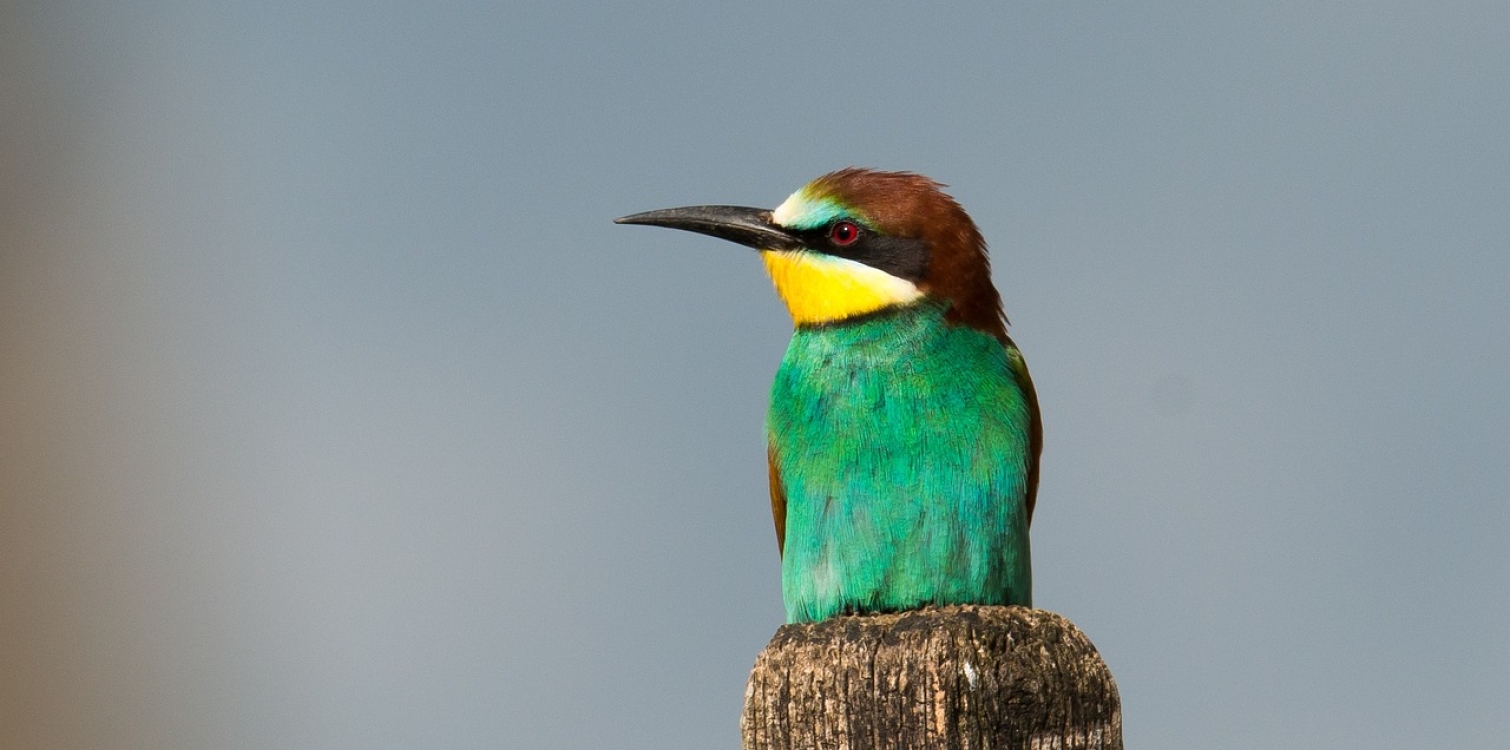
Source: Pixabay
European bee-eater (Merops apiaster)
|
Size |
|
|
Weight |
|
|
Diet |
|
|
Habitat |
|
|
|
|
| Kingdom |
|
| Phylum |
|
| Class |
|
| Order |
|
| Family |
|
| Genus |
|
| Species |
|
The bee-eater is one of our most beautifully coloured birds. This migratory bird returns to our area in June, usually choosing a high clay cliff for nesting. It is very rare here.
The bee-eater is adorned with magnificent and exotically coloured feathers. A slender bird, it has a long, curved beak and slightly elongated central tail feathers.
The colourful birds return to Slovenia from their African wintering grounds in late April and early May. They usually choose a high clay or sandy-clay wall for nesting, where they dig a nesting tunnel with a fairly rectangular-shaped entrance opening. They often return to old nesting tunnels. They start hatching in June and usually lay up to 7 eggs.


They are excellent fliers and hunt larger flying insects, especially dragonflies, bumblebees and bees.
They are best seen during the feeding season, when both parents bring food in their beaks and the young are sometimes waiting at the entrance.
DID YOU KNOW?
- For many years, Bizeljsko was the only area in Slovenia where the European bee-eater could be found. According to locals, it has been nesting there since 1984. A colony of bee-eaters has been nesting for many years in the quartz sandpit at Župjek in Bizeljsko. An observation post has been set up nearby.

